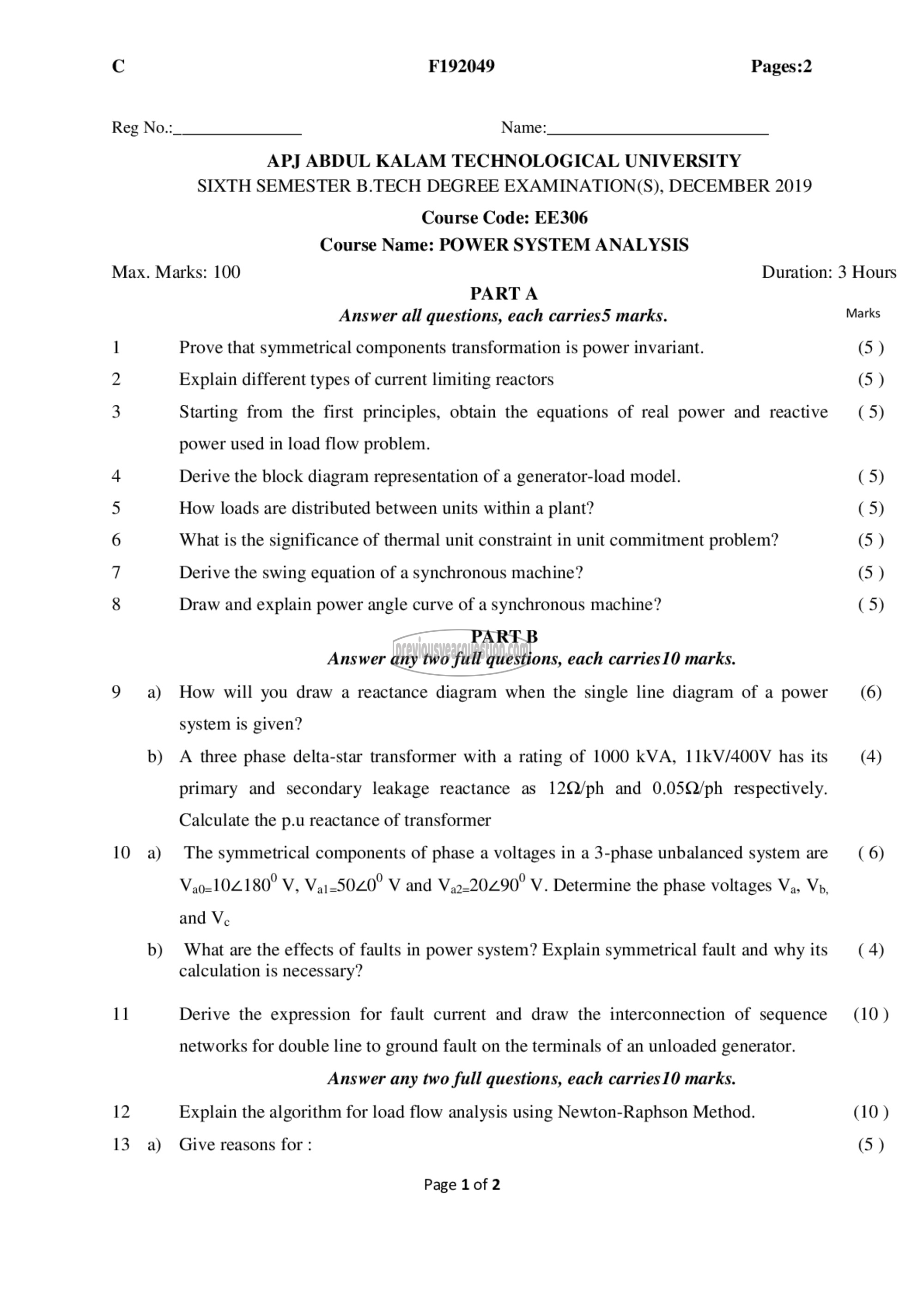APJ ABDUL KALAM TECHNOLOGICAL UNIVERSITY Previous Years Question Paper & Answer
Semester : SEMESTER 6
Subject : Power System Analysis
Year : 2019
Term : DECEMBER
Scheme : 2015 Full Time
Course Code : EE 306
Page:1
C F192049 Pages:2
Reg No.:_ Name:
APJ ABDUL KALAM TECHNOLOGICAL UNIVERSITY
SIXTH SEMESTER B.TECH DEGREE EXAMINATION(S), DECEMBER 2019
Course Code: EE306
Course Name: POWER SYSTEM ANALYSIS
Max. Marks: 100 Duration: 3 Hours
PARTA
Answer all questions, each carries5 marks. Marks
1 Prove that symmetrical components transformation is power invariant. (5)
2 Explain different types of current limiting reactors (5)
3 Starting from the first principles, obtain the equations of real power and reactive (5)
power used in load flow problem.
4 Derive the block diagram representation of a generator-load model. (5)
5 How loads are distributed between units within a plant? (5)
6 What is the significance of thermal unit constraint in unit commitment problem? (5)
7 Derive the swing equation of a synchronous machine? (5)
8 Draw and explain power angle curve of a synchronous machine? (5)
PART 8
Answer any two full questions, each carries10 marks.
9 a) How will you draw a reactance diagram when the single line diagram of a power (6)
system is given?
b) A three phase delta-star transformer with a rating of 1000 kVA, 11kV/400V has its (4)
primary and secondary leakage reactance as 12Q/ph and 0.05Q/ph respectively.
Calculate the p.u reactance of transformer
10 a) The symmetrical components of phase a voltages in ೩ 3-phase unbalanced system are (6)
۷102-180“ പു, Vai-5020° V and V.2-20290° ۷۰ Determine the phase voltages Va, Vb,
and ५५
b) What are the effects of faults in power system? Explain symmetrical fault and why its (4)
calculation is necessary?
11 Derive the expression for fault current and draw the interconnection of sequence (10)
networks for double line to ground fault on the terminals of an unloaded generator.
Answer any two full questions, each carries 10 marks.
12 Explain the algorithm for load flow analysis using Newton-Raphson Method. (10)
13 a) Give reasons for : (5)
Page 1 of 2
